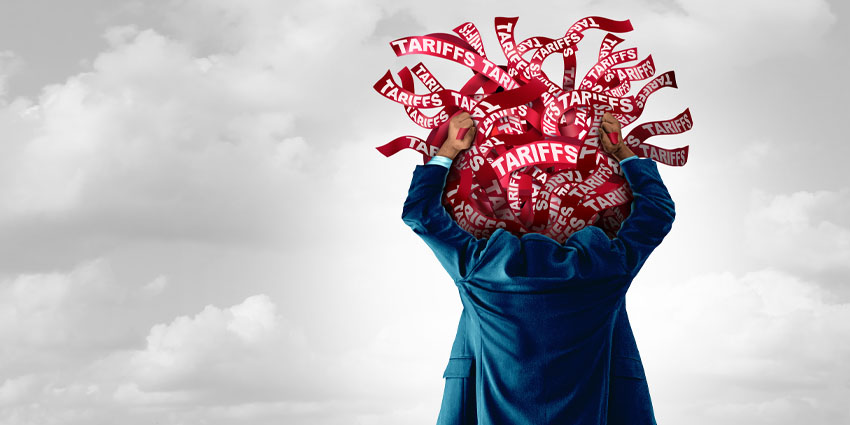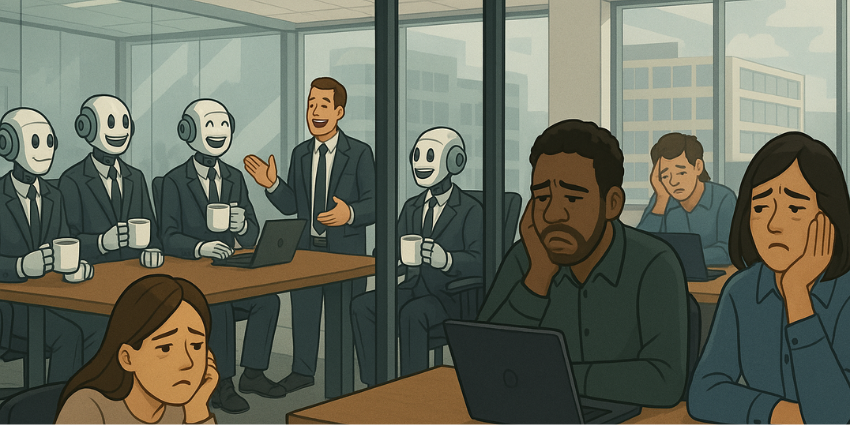The earthquake of President Donald Trump’s on-again/off-again tariffs continues to have repercussions for the tech world.
The Trump administration’s recent 90-day reprieve for most affected nations might have stabilised the stock market after experiencing one of the most worryingly frantic periods of its history after the tariffs were first introduced. However, no innovative business can possibly think that’s the end of volatility, and organisations are trying to adapt and future-proof as much as they can. For example, the chaos sparked by the current climate recently caused collaboration device vendor Logitech to take drastic action.
While the company stresses its confidence in delivering on its current fiscal year targets, the unpredictability has catalysed a strategic retreat from longer-term forecasting—it withdrew its outlook for the 2026 financial year entirely, citing the “continuing uncertainty” of Trump’s tariffs.
Logitech’s comment on the situation said:
Logitech withdrew its outlook for Fiscal Year 2026 given the continuing uncertainty of the tariff environment.”
This comes as the Trump administration implements a significant expansion of import tariffs affecting a wide range of tech hardware components and finished products. The administration’s ongoing aggressive trade stance toward China and other prominent manufacturing hubs has resulted in anarchy in supply chain economics for tech manufacturers, with a particular impact on companies heavily invested in physical collaboration tools and peripherals.
- Logitech To Enhance Modern Workspaces With Rally Camera Streamline
- What Comms Lessons Can High-Risk Sectors Learn From the White House Leak?
Why UC and Collaboration Vendors Suffer Disproportionate Tariff Impact
The UC and collaboration sector is particularly vulnerable to these trade policy shifts for several structural reasons. Unlike pure software providers, hardware-dependent UC vendors like Logitech operate in a space where their product ecosystem—cameras, headsets, conference room systems, and peripherals—hinges on complex global supply chains with significant exposure to tariff-affected regions.
This space arguably faces a trifecta of challenges under the new tariff regime. First, the hardware-intensive nature of collaboration technology creates high exposure to component tariffs. Many UC devices entail semiconductors, cameras, microphones, and specialised components sourced from or manufactured in tariff-affected regions, particularly China. With some components imposing duties up to 25 percent, the cost structure for these products becomes substantially less predictable.
Second, compared to pure software plays, the industry traditionally operates on relatively tight margins, meaning tariff-induced price increases cannot be smoothly absorbed without potentially derailing profitability. Most major players i the UC hardware space work within 15-30 percent gross margin ranges, according to Gartner’s 2024 Market Guide for Unified Communications Hardware, making them particularly sensitive to input cost fluctuations.
Lastly, the sector faces elaborate pricing challenges in a competitive market. Enterprise customers typically negotiate multi-year purchasing agreements, which make rapid price adjustments problematic to implement. This culminates in a plausible squeeze scenario where input costs rise, in some cases substantially, while selling prices remain comparatively fixed in the short term.
Warning Signal: Implications for the UC Industry’s Health
Logitech’s withdrawal of forward guidance potentially signposts more than a single company’s cautious accounting—it conveys broader uncertainty across the collaborative tech ecosystem. According to a 2024 Frost & Sullivan report, Logitech is a market leader with an approximately 22 percent share of the global conference room video space. Its retreat from financial forecasting could dauntingly embody a canary in the coal mine for the entire sector.
One feasible implication of this development is that supply chain reorganisation appears inevitable but costly. Manufacturers may move production facilities to non-tariffed regions. However, such major transitions necessitate significant capital investment and time. The uncertainty around which tariffs might be permanent versus temporary complicates these critical strategic decisions.
Pricing strategies will likely undergo significant revision. Enterprise customers might experience shifts toward subscription-based hardware models that empower vendors to acknowledge tariff volatility in ongoing pricing rather than absorb it in exorbitant one-time purchase costs.
Market consolidation may accelerate as smaller vendors with more limited supply chain flexibility might struggle to keep up with margins. Organisations with diversified manufacturing footprints and grander scale will hold advantages in weathering the tariff storm.
IDC’s Worldwide Unified Communications and Collaboration Forecast projected strong 12-15 percent annual growth through 2027 for the UC and collaboration space, underpinned by hybrid work adoption and conference room enhancements. However, these forecasts now appear increasingly dubious as pricing and availability uncertainties tear through the supply chain.
What are your thoughts on how the tariffs are impacting the UC and collab space? Are you worried about the direction the market is going in or confident that stability will return? Join the discussion on Reddit!
Are you worried about how the Trump tariffs are impacting the UC & Collaboration industry?
byu/eliot6777 inuctoday







